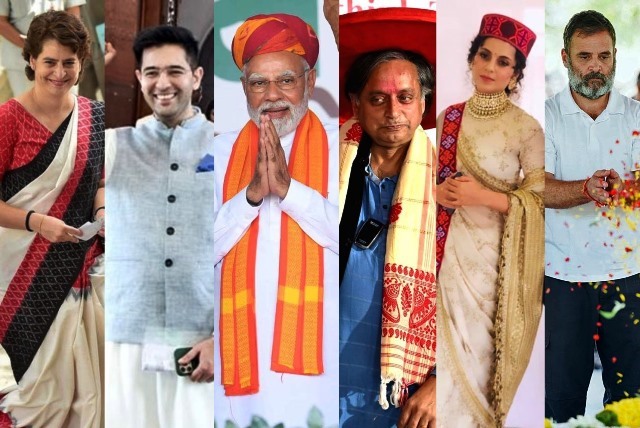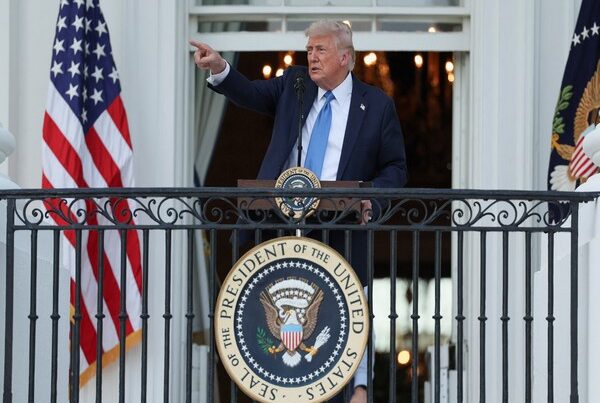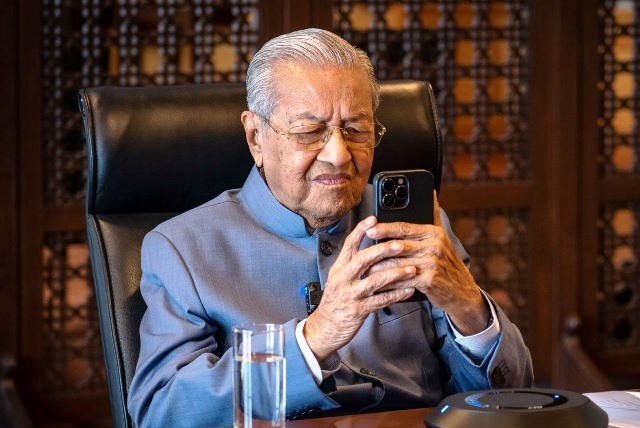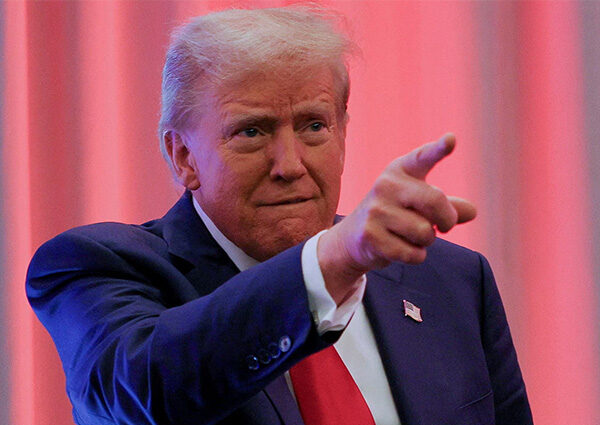
Different Shades of Electoral Canvas
India’s political scene is increasingly seen as getting ‘saffron-ised’. But the optics of the current elections cannot be wrong. White is still the dominant colour across the country.
Candidates, their party workers and those who come out in large numbers to attend the rallies, or line up the roads on which the politicos speed past, the dominant colour remains white.
It is more so in the southern peninsula. If read as reflective of the north-south political divide, now is the testing time. The elections’ outcome will show, on June 4, if and the extent to which, the saffron has breached this divide and entered the South.
An Indian election, the world’s largest involving 970 million voters is a colourful exercise of political hues (from Left to far-right), languages spoken (a score of them), and the slogans raised and painted on the walls and banners.
Halfway through this exhausting seven-week exercise, there is little that is pristine, however, about the language used for the discourse. Going by the quality and intensity, it is getting increasingly toxic. Optics on television combine with cacophony in the name of debate. The spate of complaints before the Election Commission and the courts show nothing in black and white. You look for shades of grey.
While his many rivals wear white, Prime Minister Narendra Modi is different, always. From a nondescript tailor in New Delhi’s Shankar Market, he has taken his sartorial taste to branded heights. While his American friends, Barack Obama and Donald Trump changed mainly the tie, he hugged them dressed in new attires, including a monogrammed suit. When criticism mounted, he reportedly donated the INRs two million proceeds from its sale to charity. Rahul Gandhi who has questioned his expensive taste, pegging the price of each attire at INR one lakh. But he too faced flak for his Burberry jacket.
Modi manages to change his “Modi jackets” (called “Jawahar jackets” once upon a time) of different colours and designs. He has shown a penchant for multi-hued turbans and headgear – a Sikh turban in Punjab, a Japi hat while campaigning in Odisha and in Pune, an elaborate Pagdi. Understandably, Modi needs to change them too as he flies across the country, to three different states on some days.
The searing summer has forced the discarding of the “Modi masks”. But it still dictates white, preferably cotton. Emulating Modi, everyone in his party must also wear something saffron – scarf, turban, cap or just a saffron armband – which also points to the regimentation of the party cadres. But others are equally guilty.
Khadi is preferred since it is associated with the freedom struggle but is also the most convenient given the Indian climate. Most Indian politicians wear white because it is associated with purity and integrity – qualities the voters wishfully expect of their leaders.
The younger leaders, however, are moving away from these unwritten dress codes. The television cameras also dictate a change in approach. Arvind Kejriwal chose to wear checked shirts when he hit the ground running on being bailed after 51 days in jail.
ALSO READ: What’s Happening in BJP’s Make or Break States?
His wife stood in for him, campaigning in colourful saris, but remained soberly dressed. India is still a male-dominated, and mostly conservative, society with an equally conservative dress code in most parts of the country.
Modi’s political rivals are mostly khadi-clad. That includes Mamata Banerjee who dons a white cotton saree with a blue border – a reminder of Mother Teresa. But one Congressman who offers him competition – and we are not talking of the English language and how it is delivered in public – is Shashi Tharoor. Like Sachin Pilot, good looks help.
Kejriwal’s colleague Raghav Chadha with his recently minted status of film celebrity (Parineeti Chopra) spouse, remains among the few challengers left in the opposition. Political migration of the Scindia family, always well-clad, has lent predominance to Modi’s party.
Is the change, politically and sartorially, because the Indian political class has shed its age-old ideological mores? The world outside and the mostly urban-educated at home, following the corporate-sponsored fashion world, appear to think so. Modi, with his power dressing, is their hero.
Simona Vittorini in a 2022 paper published in Commonwealth & Comparative Politics writes: “With the decline of ideologies, the erosion of old markers of political affiliation, and the rise of post-modern, post-ideological mediated forms of mobilisation and participation, politics has become more spectacular, resulting in changes in how the popular vote is won and popular sentiments are mobilised.”
Vittorini focuses on Modi as a ‘semiotician’, and how he, supposedly an expert on the art/science of symbolic communication, uses sartorial symbolism for the “performance of ordinariness, difference and extra-ordinariness.”
Yet, when clothes do the talking for politicians, experts – both political and sartorial – insist that simple clothes are a leader’s way of connecting with the voters. June 4 will show, for one, if Rahul Gandhi is a successful votary.
His great-grandfather Jawaharlal Nehru moved away from his mentor Mahatma Gandhi, the “half-naked faqir” whose meeting the British monarch in just the loincloth was a huge political statement representing the poorest of India and the entire colonised world. Nehru set the fashion trends at Independence, shedding Western attire for Sherwani-Churidar.
Like Nehru, daughter Indira Gandhi also set the fashion parameters. Vogue magazine quotes journalist-turned-politician Sagrika Ghosh: “Indian women politicians have generally worn saris and salwar kameezes since India became independent in 1947, which is when modern democratic politics began in India,” Ghosh is the author of Indira, India’s Most Powerful Prime Minister.
“In the immediate post-Independence period it was always white or cream handloom saris evoking the Gandhian freedom struggle and khadi campaigns. Indira Gandhi set a trend for women politicians, stepping out in rose pink Tanchois, elegant Benarasi saris and crisp handlooms. Her style was always minimalist and modern,” Ghosh writes.
Sonia, it is said, inherited Indira’s magnificent sari collection. She was the perfect foil for Rajiv, her always-in-white husband who replaced slippers/sandals with white walking shoes.
After some years of emulating his father’s all-white kurta-pyjama, easily the most convenient Indian dress, Rahul has switched to jeans and white T-shirts. He wore it from Kashmir to Kanyakumari during his Yatras. Why he has shed the colourful attire and headgear that his family peers donned remains inexplicable. Some unsolicited advice may be in order. Why has Rahul discarded the one advantage he enjoys over Modi – he is 20 years younger? When a clean-shaven look would help immensely, he sports a ‘khichdi’ beard like Modi. What a waste!
Luckily, sister Priyanka makes up for this. Like her mother and grandmother, Priyanka wears beautiful sarees, and salwar-kameez in bright, pleasant colours. Her simple, good looks and her conversational style of addressing meetings register a modern, yet simple persona as she connects with the masses.
Directives regarding who wears what have come up on several occasions in India’s past, including those imposed by the Mahatma himself. What politicians must wear was also briefly discussed in the Constituent Assembly. There is no last word – nor should there be.
The writer can be reached at mahendraved07@gmail.com
For more details visit us: https://lokmarg.com/



